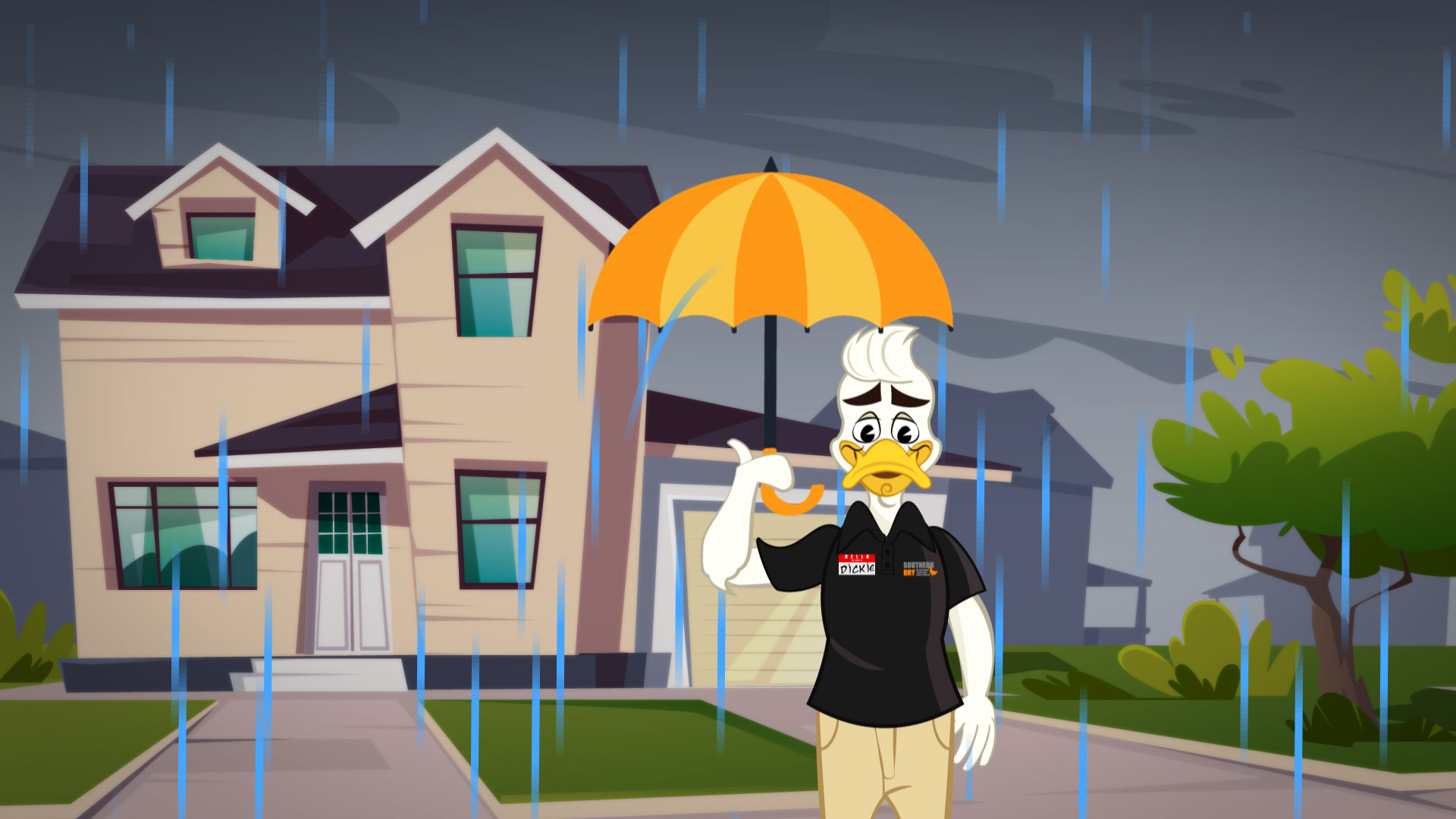A flooded basement can do costly damage to your entire home. In addition to the obvious risk to interior finishes in the basement and any belongings stored there, receding flood water can also weaken your foundation and lead to expensive structural damage.
The good news is, the experts at SoDry are here to help.
This overview can help you assess your flooding risk and help you to prepare to protect your basement from flooding.
Common causes of basement flooding
Basement floods come in all levels of severity, from minor to major, and happen for a wide variety of reasons. Risk factors include things like the age and placement of your home, regional soil and ground water conditions, catastrophic weather events, and variations in the quality of construction methods and materials.
Here are a few of the most common flood causes:
- Storm Water: Excessive rain or snow melt (as well as seasonal flood events that originate off your property) can cause a basement with improper seals or drainage to fill up quickly.
- Plumbing Failure: Just like any other system in your house, aging water or sewer pipes or sump pumps can fail and fill up your basement quickly. The leaks can go undetected for a while in hidden areas.
- Grading Problems: Improper grading or the effects of erosion can cause groundwater and runoff to drain toward your basement instead of away from it.
- Faulty Gutters: Your gutters and downspouts require care and maintenance. Left unattended, these components can wear out or slip out alignment allowing unwanted water to collect.
- Foundation Cracks: All houses tend to settle over time, but concrete and masonry cracks, as well as improper or worn out seals can allow unwanted water to build up in your basement.
What to do if you have a flooded basement
Removing standing water is the highest priority when you have a flooded basement. Obviously, the longer the water is allowed to stand, the greater the damage it will do to your home and your belongings.
Apart from the physical damage water can do, it can also trigger mold growth and related health risks for you and your family. Here are some tools and options to help with flooding:
- Submersible pumps: You can get one of these in the $200 range at most consumer hardware outlets and sometimes by same day or next day delivery from online retailers. The advantage of a submersible pump is that you can let it run continuously. For more serious basement flooding, you’ll want a commercial grade sump pump
- Wet vacuums: Similar to common “shop vacs” and designed to pick up standing water. The downside is, unlike a pump you can turn on and forget, you’ll have to stop and empty it frequently. Full canisters of water can be heavy to carry upstairs.
- Fans and dehumidifiers: Once the standing water is out of your basement, you’ll still have a lot of residual moisture to remove. Sodden rugs and salvageable belongings need to be removed and aired out. This is a critical step to prevent mold and rot. Dehumidifiers will help with long-term moisture mitigation and air quality.
NOTE: Everyone knows that water and electricity don’t mix. Safety should be your number one concern before entering or cleaning a flooded basement. If the water is above outlet level, your electrical system could be compromised. If the flood is related to a wider emergency, such as an earthquake or hurricane, downed wires could be contacting the water. Make sure that your main breaker is off or contact a qualified professional before attempting water removal.
Basement flooding prevention and repair options
Even if you live in a flood prone area, there are steps you can take to protect your basement and reduce the risk of serious damage.
For a start, your normal home upkeep routine should include regular basement inspections. Look for worn seals or caulking, cracks in concrete or masonry, or signs of past moisture accumulation like mineral bloom, water stains, or early signs of dry rot, especially in hidden places where materials like joists and subfloors join.
There are preventive measures you can put in place yourself, such as:
- Keep gutters and downspouts in good repair and directed away from your foundation.
- Replace worn seals or caulking around doors, windows, vents and utility pass-throughs.
- Ensure that grading around your foundation leads water away from the house.
- Have your plumbing inspected regularly to prevent major breaks and leaks.
- Install simple exterior French drains to draw water away from your basement.
There are times when even the best prevention measures are no match for nature. If you have serious basement flooding, or if you suspect that your home is in a high-risk area, affordable and reliable professional help is just a phone call away. A qualified basement waterproofing specialist will stand behind their work and offer complete preventive or remedial services such as:
- Interior basement drainage solutions
- Sump pump and dehumidifier sizing and installation
- Crawl space encapsulation services
- Complete basement waterproofing services
- Foundation inspection and repair
- Ongoing maintenance plans to preserve your home
SouthernDry is a full-service basement waterproofing services provider. We don’t believe in a “one-size-fits-all” approach. We create a customized solution that best fits every customer’s needs and budget.
Our estimates are free, and they’re the best way for our skilled team to evaluate any waterproofing issues in your home.
Say no to leaky basements! SouthernDry does the job right the first time, and we offer a lifetime transferable warranty on our basement waterproofing systems.










